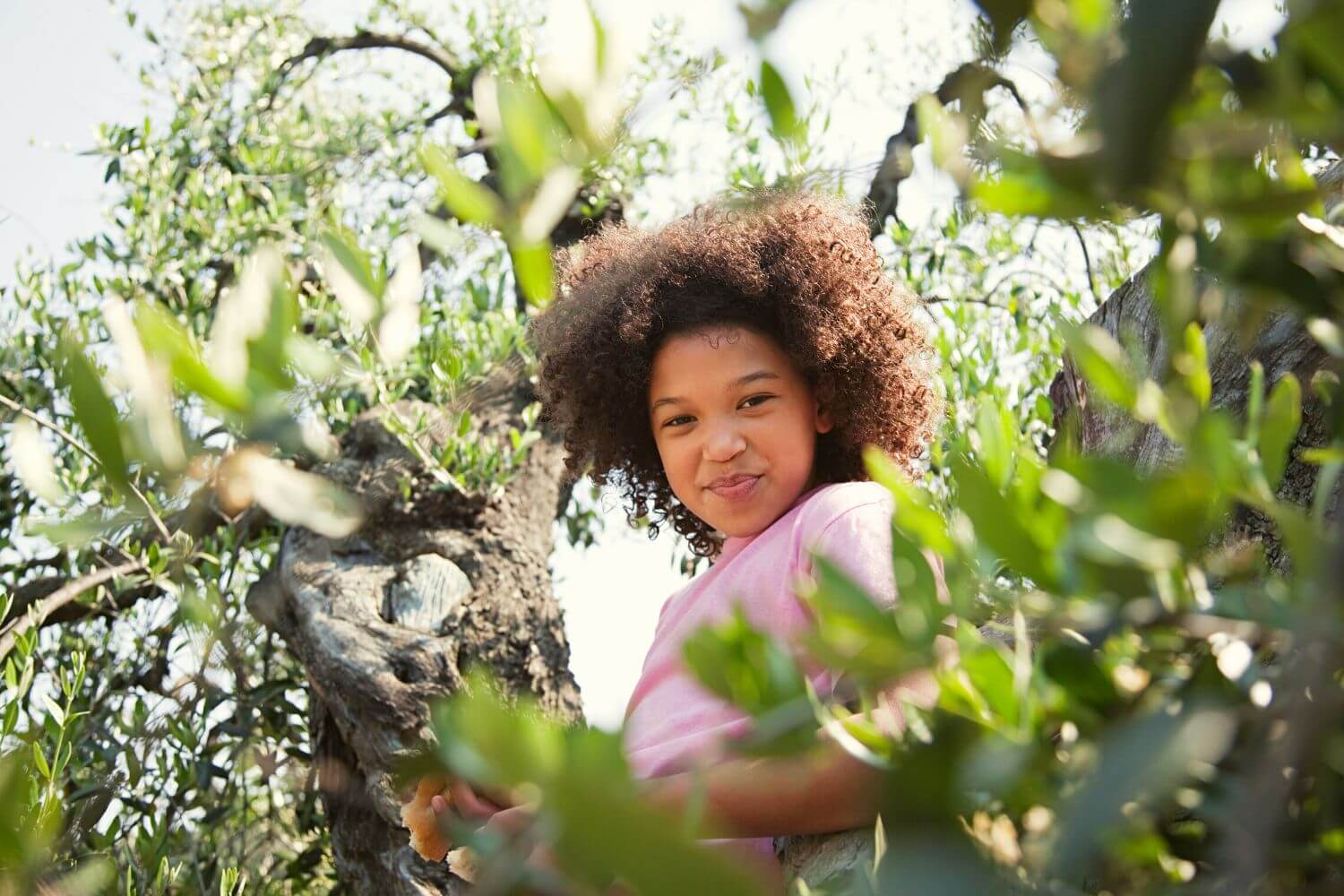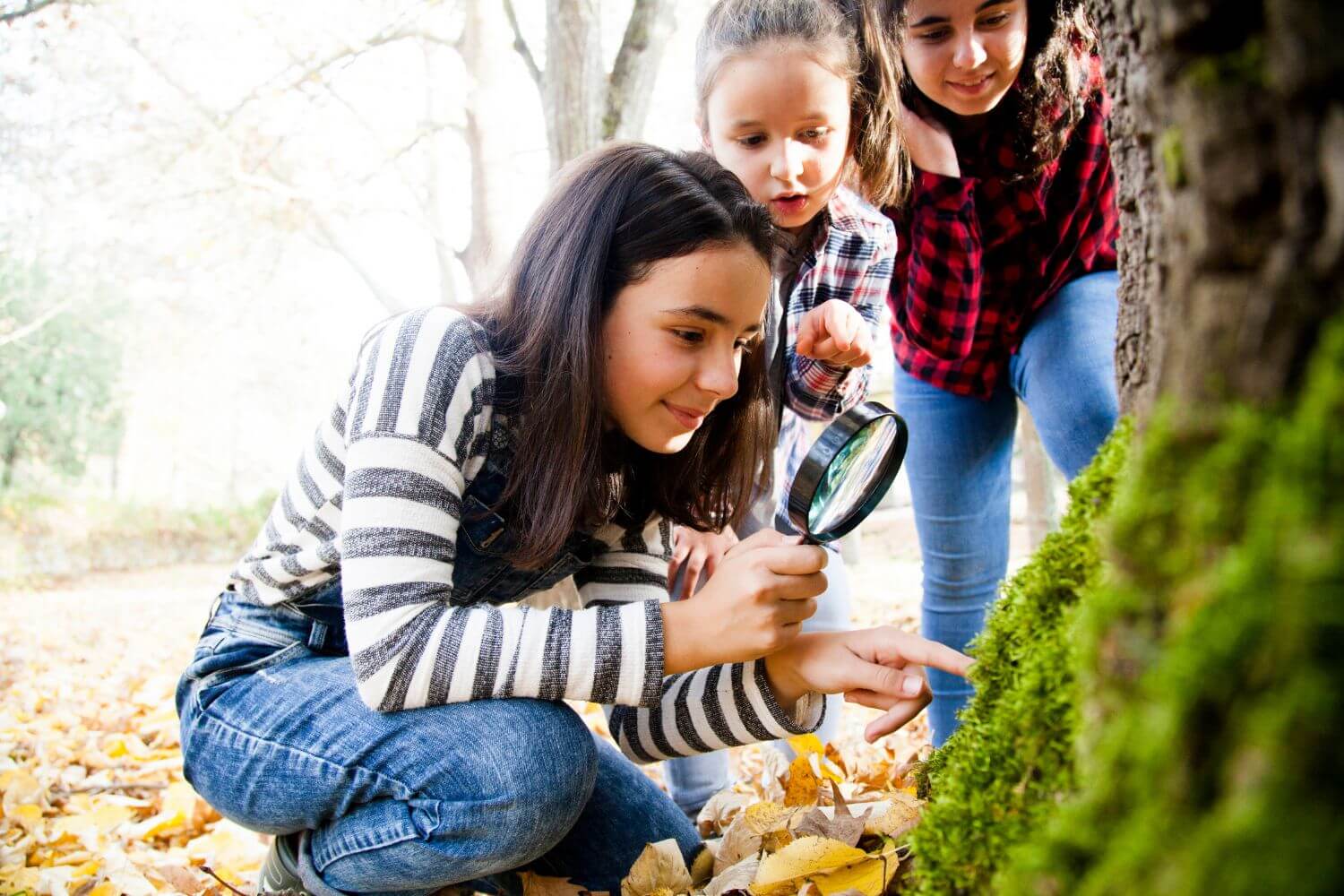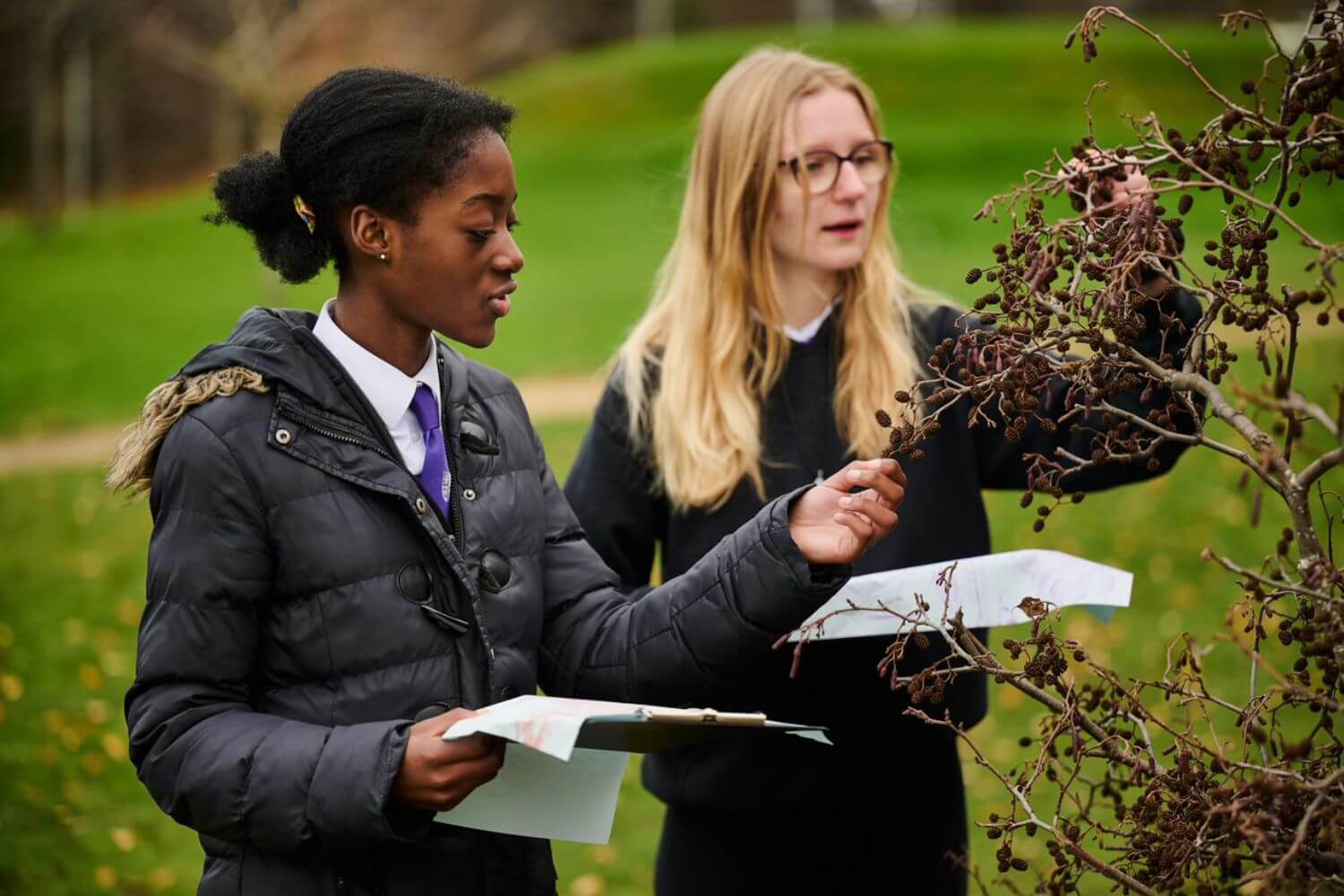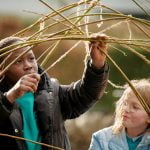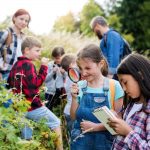Making outdoor learning and play inclusive of girls
On International Women’s Day, explore four ways to ensure that outdoor learning and play is safe, inclusive, and accessible for all.
Outdoor learning and play offer countless benefits for children and young people, from supporting development of key skills to boosting mental health and wellbeing. All children deserve to enjoy those benefits and experience the wonder of connecting with nature. However, while the outdoors should be inclusive and accessible to all, this isn’t always the case.
From gender stereotypes to inadequate facilities, girls continue to face barriers to getting outdoors. For International Women’s Day, we wanted to share some advice for ensuring that outdoor learning and play is inclusive of girls, drawing on findings by organisations doing some fantastic work in this area.
Let’s get started by exploring why it’s important to ensure that the outdoors is safe, inclusive, and accessible for all.
Why it’s important to make the outdoors inclusive
At Learning through Landscapes, we are committed to ensuring that outdoor learning and play are available and accessible for every child and young person in every school, in accordance with the UN Convention on the Rights of the Child. However, girls are among the children recognised by the UN as requiring particular attention to realize their rights, owing to ‘gender stereotypes which serve to compound and reinforce patterns of discrimination and inequality of opportunity.’
Even outdoor learning and play can reinforce harmful gender stereotypes which limit girls’ participation, leading to potentially lifelong consequences. The World Health Organisation found that around 85% of adolescent girls do not meet daily physical activity recommendations. Furthermore, girls’ engagement with exercise and sport declines throughout adolescence, putting their current and future health at risk.
It’s not just girls’ physical health which is under threat. Outdoor learning and play has measurable socio-emotional, academic, and wellbeing benefits. It improves meaningful relationships, supports the development of key life skills like independence and resilience, and connects children with nature, laying the groundwork for a lifelong relationship with the natural world.
Every child deserves to enjoy these benefits, so we must do our utmost to ensure that the outdoors is safe, welcoming, and accessible for everyone. After all, we all stand to benefit from diversity and inclusion outdoors – and everywhere else.
So, how can we make outdoor learning and play more inclusive of girls?
Four ways to ensure outdoor learning and play is inclusive of girls
1. Reduce gender stereotypes
The outdoors is for everyone, but it doesn’t always feel that way. Research shows that outdoor experiences often reinforce gender stereotypes which perpetuate the idea that girls aren’t suited to the outdoors.
For example, many people assume that boys are happier than girls to roll in the mud and get dirty, but it’s important to interrogate these assumptions. Putting aside the fact that it’s a huge generalisation, we need to ask why boys are happier to roll in the mud. Is it innate, or is it learned?
In fact, we know that girls’ opportunities for outdoor play are far more restricted than those of boys. Research shows that girls face more supervision than boys, limiting where and how often they can play outdoors. Additionally, society places different behavioural expectations on girls, and this restricts their own beliefs about what they’re allowed to do and what they’re capable of.
These gendered expectations are often reinforced in the classroom, in the home, and in our outdoor spaces. Even in the early years, children’s pretend play demonstrates an understanding of gender roles which is affirmed by depictions of gender in their toys, their play areas, and visual media.
Traditional stereotypes about masculinity and femininity harm all of us. Therefore, we must be vigilant about challenging those stereotypes outdoors. By introducing children to diverse role models from across a range of outdoor activities, we can remind them that getting muddy, connecting with nature, and being active is for everyone — no matter what you look like.
2. Empower girls to feel confident outdoors
According to a report by Women in Sport, a lack of confidence presents a major obstacle to sports participation for girls. Huge numbers of girls disengage from sport after primary school, citing body image concerns, fear of failure, and a lack of support as some of the biggest barriers.
In particular, the physical and emotional effects of puberty have a huge impact on girls’ confidence, with even the sportiest girls finding it challenging to manage periods. Around 7 in 10 girls avoid physical activity during their periods, and those occasional absences can quickly become a long-term habit without the proper support.
Research suggests that children avoid exerting themselves in PE lessons if they can’t shower afterwards. If girls are worried about getting hot and sweaty, or preoccupied with their body shape in their PE kits, they’re much less likely to engage with outdoor activities. Indeed, as women’s football grows in popularity, many clubs are changing the colour of their kits to accommodate players on their periods, allowing them to focus on their performance without added anxiety.
Let Clothes Be Clothes found that school uniform policies which impose different standards for girls and boys reinforce gender stereotypes. Therefore, we must ensure that uniforms, PE kits, and the school timetable facilitate exercise and play for girls, rather than limit them.
However, this isn’t about banning items of clothing – it’s about supporting individual choice. Inclusion of some should never cost the exclusion of others.
3. Create spaces for girls
According to a report by Make Space for Girls, skateparks and multi-use games areas are among the most common provision provided by councils in the UK. However, aside from lacking appeal to girls (and many boys!), they’re often seen as hostile spaces, too.
A report by Women in Sport and Yorkshire Sport Foundation shows that, although on paper there are plenty of places for children and young people to be active, most girls feel that local parks are designed without consideration of girls’ needs and preferences. Furthermore, these spaces are usually exposed and often dominated by boys, leading girls to feel unsafe, unwelcome, and uncomfortable about claiming the space for themselves.
Girls want to be active, and they want to be outdoors. We need to facilitate this by creating inclusive outdoor spaces which alleviate the mismatch between girls’ needs and the facilities available to them.
The school grounds are the only outdoor space that children and young people have frequent access to. At Learning through Landscapes, we encourage pupils to have a say in the way their school grounds are used and improved, thereby enhancing their potential for growth and development.
By involving girls in shaping the school grounds, we can create spaces that reduce scrutiny, elicit excitement, and redefine who the outdoors is for, making it a more inclusive and accessible place for all.
4. Let girls be girls
Compared to boys, girls show higher levels of perfectionism, experience more appearance-related pressure, and shoulder more domestic responsibilities. It’s not surprising that many girls feel pressure to grow up too quickly — but they’re still children at the end of the day!
Girls must have the freedom to learn and play outdoors without additional pressures and responsibilities, as is their right under the UNCRC. Every child deserves to enjoy time outdoors as part of an active childhood. It’s our responsibility as adults to enable this.
Next steps
We hope that you feel inspired to make outdoor learning and play in your setting a more inclusive experience for all children. For more information about creating spaces for girls, visit the Make Space for Girls website where you can find resources, reports, and case studies. To learn more about reducing the barriers to exercise and sport that girls and women face, visit the Women in Sport website for further research and advice.
We also offer more general guidance on creating a more inclusive outdoor learning and play experience, from developing and improving your school grounds to finding and funding outdoor clothing.
For more personalised advice, consider our advisory visit service. One of our expert design consultants will conduct an audit of your school grounds, consulting with members of the school and observing how the space is used. They will then produce a set of personalised recommendations based on their findings, helping you to make the most of your space.
Don’t forget to sign up to our newsletter to stay up to date with the latest outdoor learning and play news!


